Thursday, December 1, 2011
1940-41 Chicago Black Hawks Bill Carse Jersey
In what was an otherwise ordinary regular season NHL contest held on this date in 1940, not one, two or even three sets of brothers took to the ice, but four pairs of siblings skated in the New York Rangers game against the Chicago Black Hawks.
Lacing up the skates for the Rangers were Neil and Mac Colville and Lynn and Muzz Patrick. Taking the ice for the Black Hawks were Max and Doug Bentley and Bob and Bill Carse.
Neil Colville first made it to the NHL in 1935 with the Rangers for a single game and then played with them full time through the 1941-42 season as a center which included winning the Stanley Cup in 1940. His career was interrupted by World War II and it would not be until 1944-45 that he would again play for New York for just 4 games. While away from the Rangers he continued to play senior hockey, winning the Allan Cup while a member of the Canadian army's Ottawa Commandos in 1942. He returned to the blueshirts full time in 1945-46, only as a defenseman, and played four additional seasons before closing out his career with two seasons with New Haven of the American Hockey League. Neil totaled 464 games with 99 goals and 265 points in 12 NHL seasons. He was just as talented on defense as he was on offense, becoming the first player to be named to NHL All-Star teams as both a forward and a defenseman. He was later inducted into the Hockey Hall of Fame in 1967.
Mac Colville, a year and a half younger than Neil, had a nearly identical career path as his brother, also first joining the Rangers in 1935 and playing right wing with Alex Shibicky on left wing and brother Neil as the center. He too won a Stanley Cup in 1940, had his career interrupted by military service by World War II, was part of the Allan Cup winning Ottawa Commandos in 1942 and returned to the Rangers for parts of two seasons after the war, this time playing defense. His final NHL totals were 353 games, 71 goals and 175 points.
Murray "Muzz" Patrick, son of the legendary Lester Patrick, joined the Rangers in 1937-38 for a single game before an NHL career that would last four seasons on defense. He too, was a member of the 1940 Stanley Cup champion Rangers squad and had his career interrupted by World War II. He returned for 24 games, but was unable to compete at the highest level after being away from the game for four years and later became the Rangers head coach in 1953.
Lynn Patrick, also a son of Lester and three years older than Muzz, was a left winger who joined the Rangers in 1934-35. He played nine seasons with the Rangers, winning the Stanley Cup in 1940. His career high was 32 goals in 1941-42 and his highest point total was 61 the following season. He too, was away from the game for two seasons and returned for the 1945-46 season for the final NHL campaign of his career which totaled 455 games, 145 goals and 335 points. He later became an NHL general manager and was inducted into the Hall of Fame in 1980.
On the other side of the ice was Max Bentley, whose long career began in 1940-41. He played center and was a member of the Black Hawks for six seasons, cut short by losing two seasons due to World War II, before a blockbuster trade sent him to the Toronto Maple Leafs where he played for six seasons as well. His final NHL season was spent with the Rangers. He was a consistent offensive force, who had a career high of 31 goals in 1946 with Chicago when his 61 points led the league in scoring, as well as two seasons of 70 points or more, capped with 72 in 1947 to lead the NHL in scoring once again. His final totals show 645 games played, 245 goals and 544 points. He won the Hart Trophy in 1946 and the Lady Byng in 1943 and was inducted into the Hockey Hall of Fame in 1966.
Doug Bentley joined Chicago in 1939. A left winger, Doug led the NHL in scoring with 73 points in 1943, which equalled the NHL record. In 1943, brother Reg joined Max and Doug on a line for Chicago, which included Reg's only NHL goal, assisted by both of his brothers, the only time in league history three brothers combined for a goal and both assists. He led the NHL in goals with 38 in 1944 before missing a season due to the war. Following his return, he was teamed with Max and Bill Mosienko to form "The Pony Line", so named due the trio all being small and quick. After the departure of his brother Max, Doug played for more seasons in Chicago through the 1951-52 season. He continued to play in the Western Hockey League for six additional seasons, which included 20 games with the Rangers in 1953-54. His final NHL totals were 565 games played, 219 goals and 543 points. He was inducted into the Hockey Hall of Fame in 1964.
Left winger Bob Carse came out of Edmonton and made it to the NHL in 1939. He played four seasons with the Black Hawks before World War II put his career on hold as well. When he returned to pro hockey in 1946 he did manage another 22 NHL games in 1947-48 with the Montreal Canadiens as part of four seasons he spent with the Cleveland Barons in the AHL. Bob totaled 165 games, 32 goals and 87 points during his career.
Bill Carse, also a left wing, made it to the NHL in 1938 with the Rangers for a single game and joined the Black Hawks the following season to begin a three year run with the team. After 122 games, 28 goals and 71 points, World War II interceded in his career path as well. After three years away from the game, he played for seasons with the Pacific Coast League's Vancouver Canucks.
The game itself was played at the Chicago Stadium in front of 16,208 fans, the largest attendance league wide at any game that season up to that point. Chicago opened the scoring with a pair of goals in the first period and again in the second to lead 3-0 after two periods. The Rangers scored midway through the third period to give hope of a comeback, but sealed the victory with a goal in the final minute of the game for a 4-1 win.
Max Bentley, who was a rookie in 1940-41, scored the opening goal at 4:25 before Bill Carse added the second Chicago goal of the period at 14:59. The rest of the siblings involved in the contest were kept off the scoresheet that evening.
By the end of the season, Doug Bentley finished with 28 points, good for third on the Black Hawks. Bill Carse finished with 20 points and Bob Carse with 18, just edging rookie Max Bentley's 17. Meanwhile in New York, Lynn Patrick outscored the rest of the siblings with 44 points, which tied for the team lead. Neil Colville was just behind with 42 and brother Mac Colville finished with 31, while defenseman Muzz Patrick registered 10 points in all.
Today's featured jersey is a 1940-41 Chicago Black Hawks Bill Carse jersey. The Black Hawks adopted the barberpole style in 1937-38 and remained in use through the 1954-55 season, although with some changes to the crest and adjustments to the striping pattern along the way.
The Blackhawks chose this style jersey as their turn back the clock jersey for the NHL's 75th Anniversary season in 1991-92, reviving a truly distinctive style that many fans were not even aware of, as throwback styles were uncommon, if not unheard of in the NHL at the time.
Fortunately for the seamstresses of the day, player names were still a long way off, as the siblings would have required a fair amount of extra sewing for first initials, or even first names in the case of Bob and Bill Carse.
While many brothers have played in the NHL, some as teammates and even won the Stanley Cup together, many others have played against each other as opponents, some of whom have even fought each other, but perhaps the most famous brothers in hockey history never played in the NHL...
Subscribe to:
Post Comments (Atom)

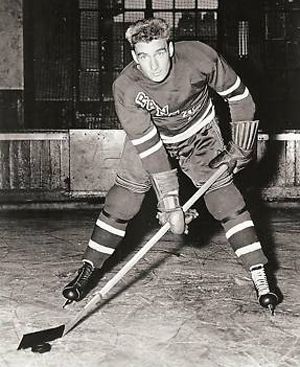
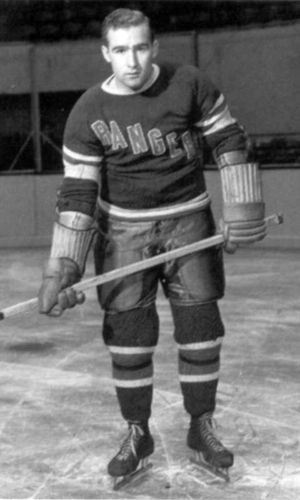
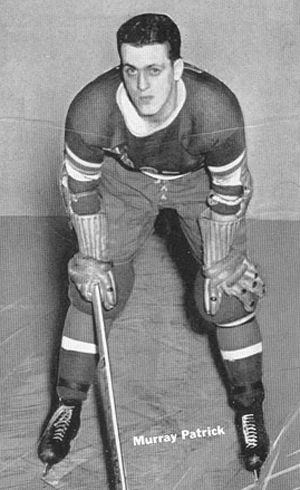

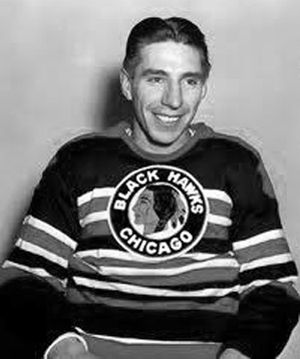
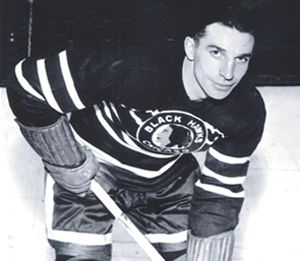
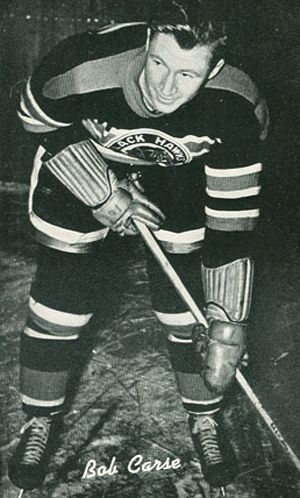

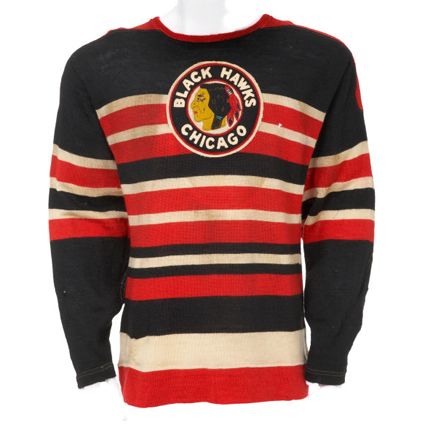











No comments:
Post a Comment
We welcome and encourage genuine comments and corrections from our readers. Please no spam. It will not be approved and never seen.